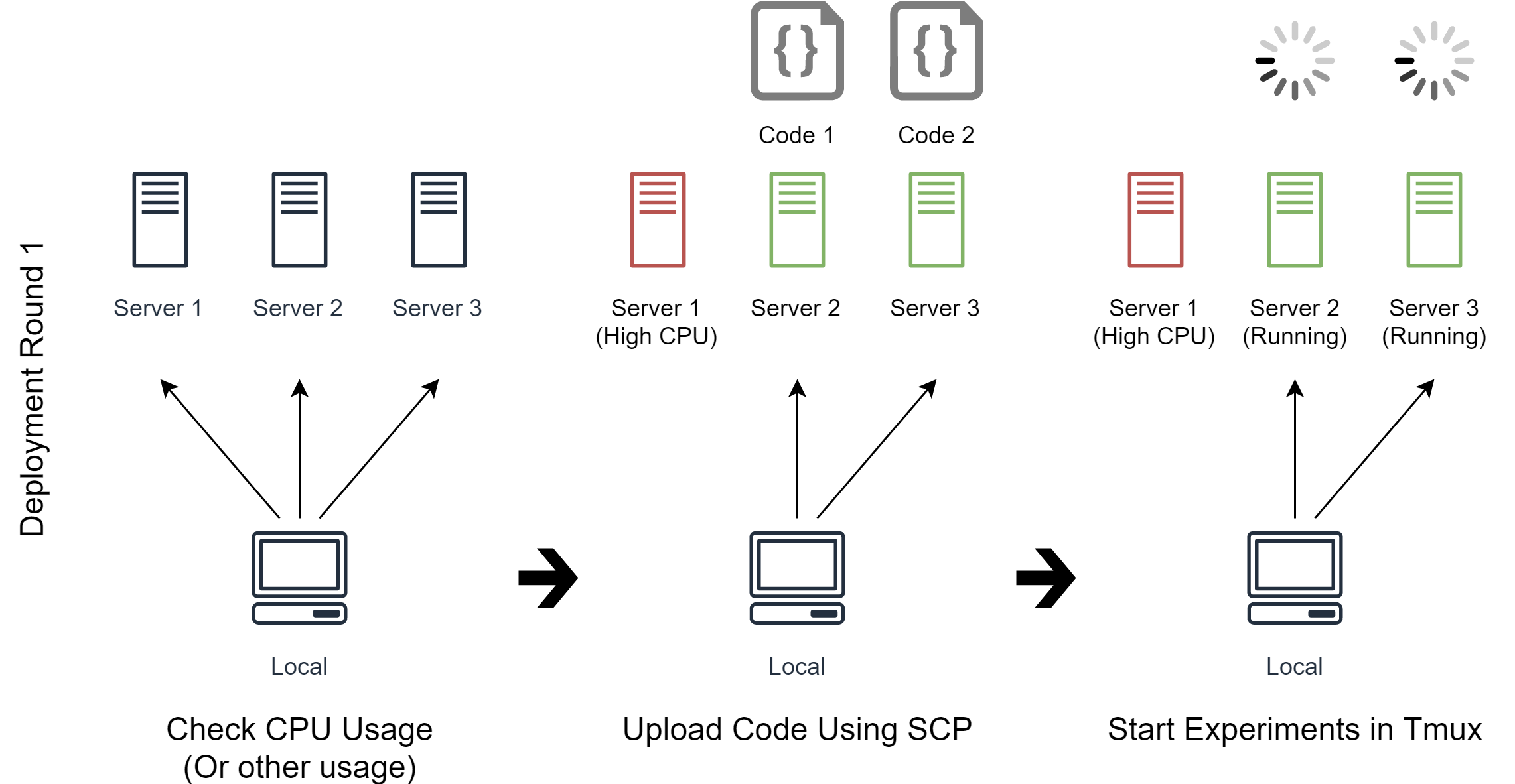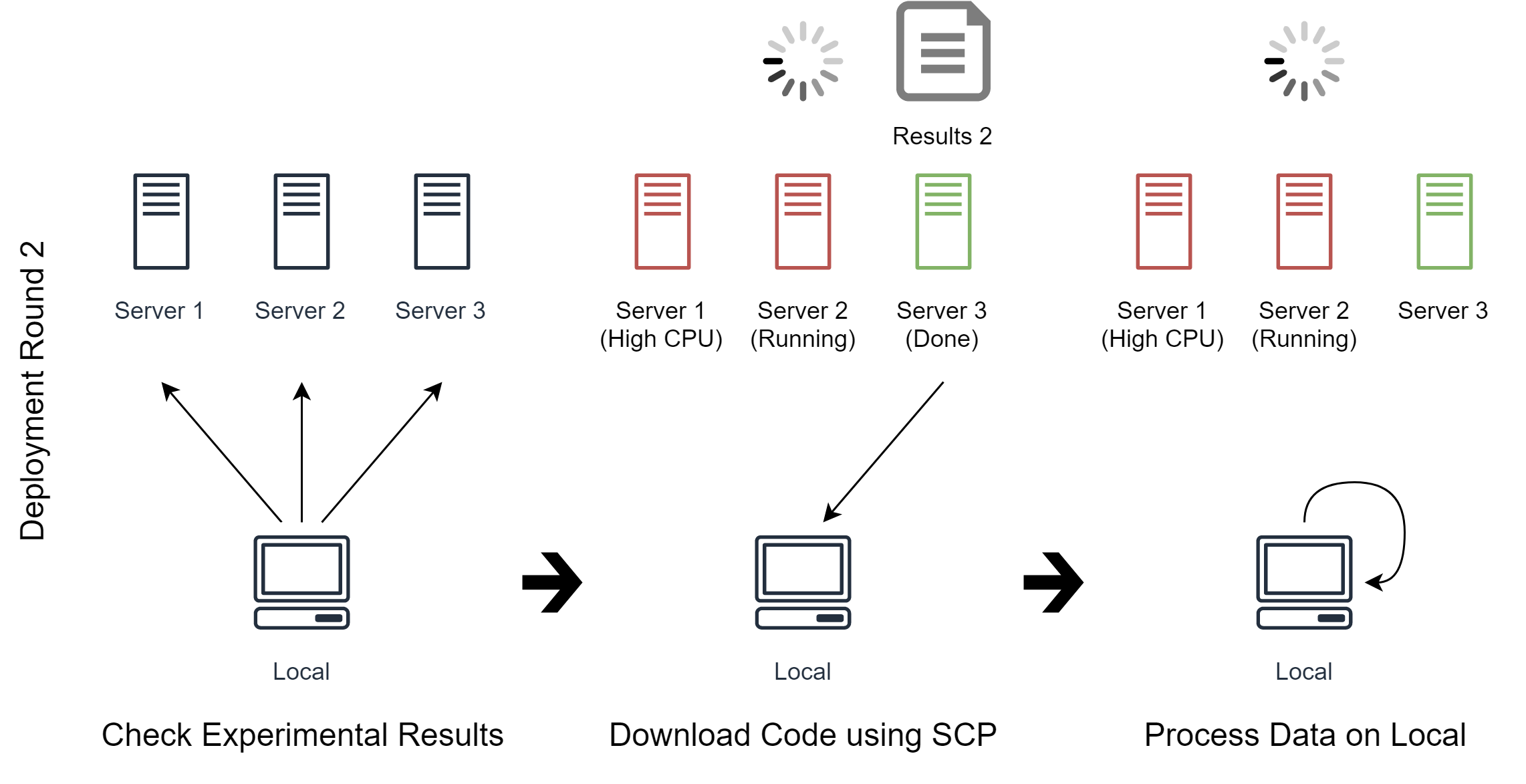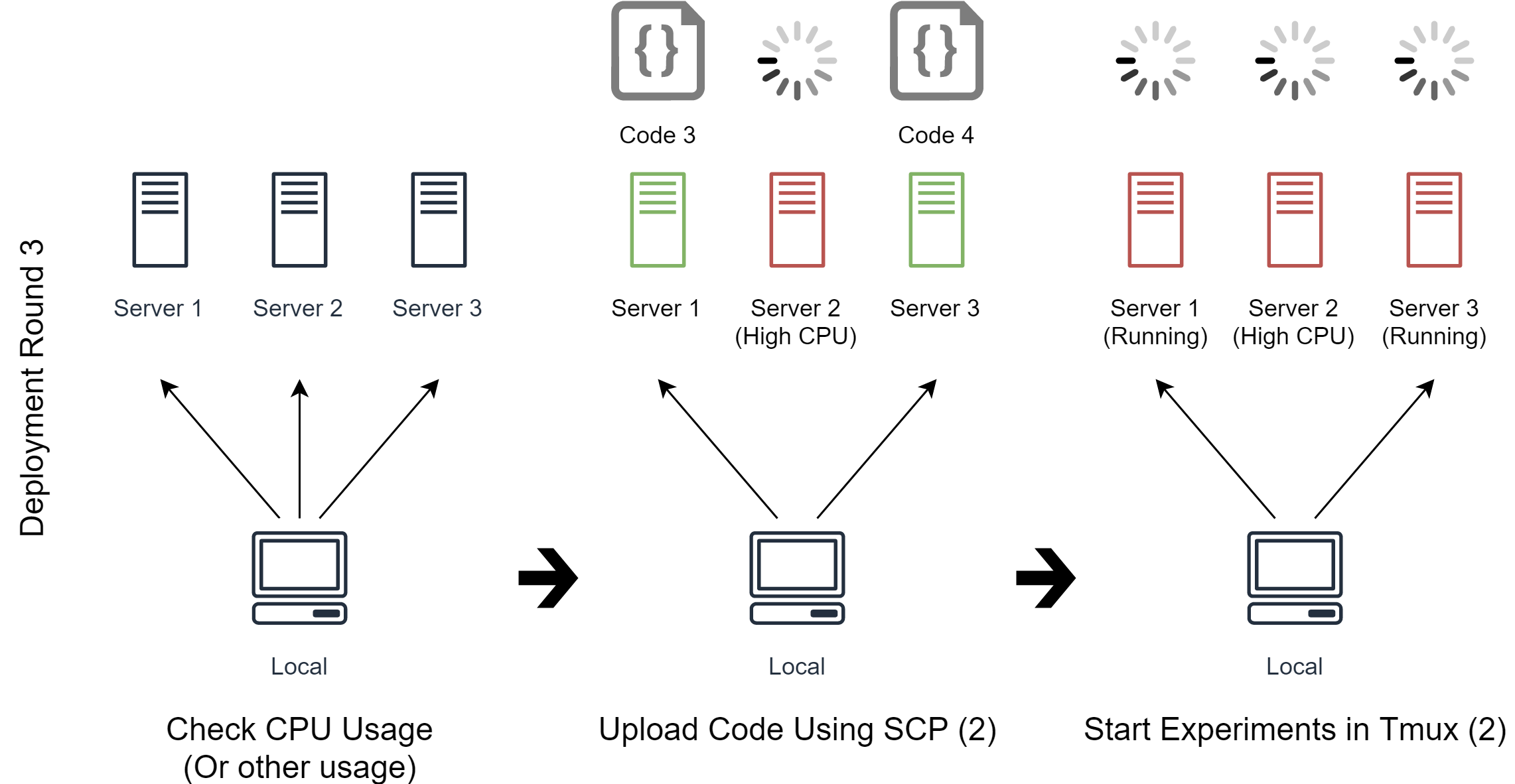2. Use Case¶
2.1. Train 4 Experiments on 3 Servers¶
If we want to run 4 experiments on 3 servers, more specifically, we need to
Upload the code to one of the servers which has low CPU usage
Run the code on the server
Download experimental results when they’re ready

Fig. 2.1 Deployment round 1.¶
In the first deployment round (See Fig. 2.1), Noodles will use the user-defined commands to check CPU usage on the servers.
The CPU usage is high on Server 1 because there are some other programs running, so Noodles uses scp to upload the code Code 1 and Code 2, and run them on Server 2 and Server 3 respectively.
As for how to upload the code, it’s just a list of commands written by us, Noodles just follows the commands.

Fig. 2.2 Deployment round 2.¶
In the second deployment round (See Fig. 2.2), we tell Noodles to check experimental results on all servers.
Noodles finds that Server 3 has just finished running Code 2, so it downloads the experimental results and process the data on local machine as we tell it to do so.

Fig. 2.3 Deployment round 3.¶
In the third deployment round (See Fig. 2.3), Code 3 and Code 4 still need to be deployed. Noodles checks the CPU usage on all servers again. As Server 1 has just become free now, Noodles can deploy Code 3 and Code 4 to Server 1 and Server 3 respectively.
The deployment round would continue until all experiments are successfully deployed. As in this case, Noodles will try to download and process the experimental results of Code 1, Code 3 and Code 4 in later rounds.